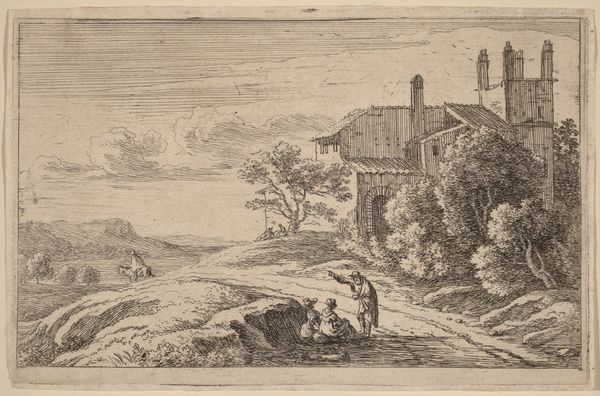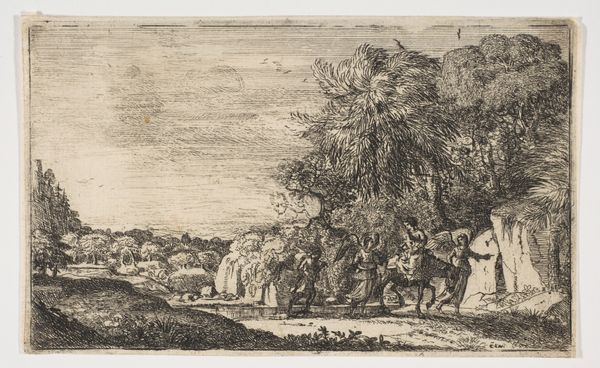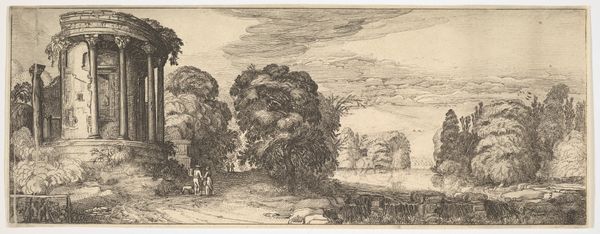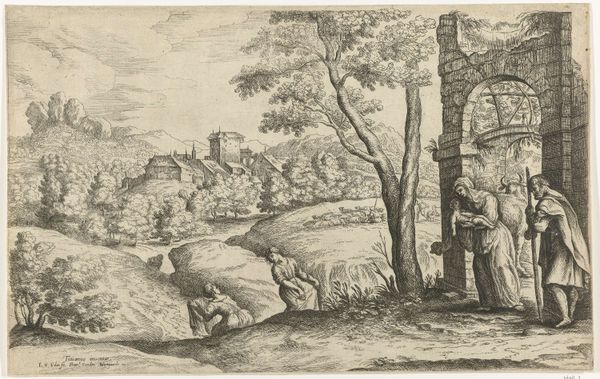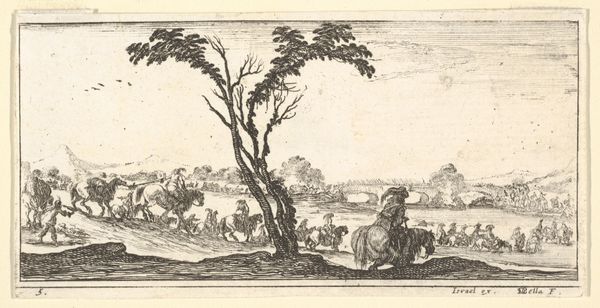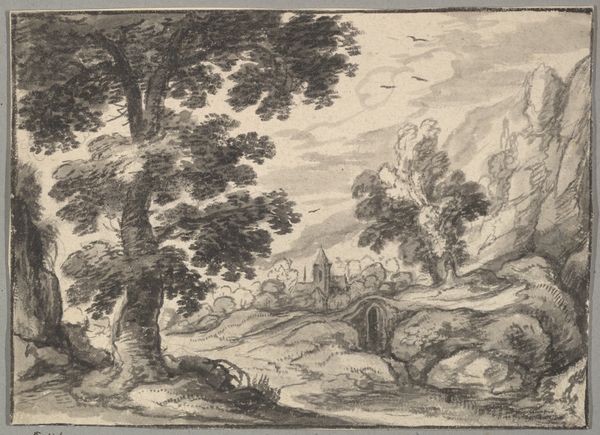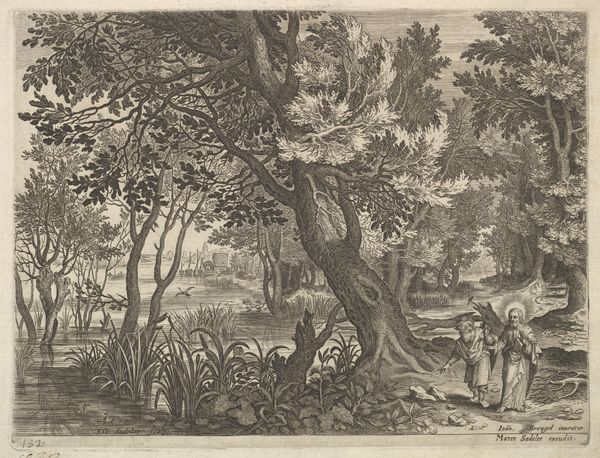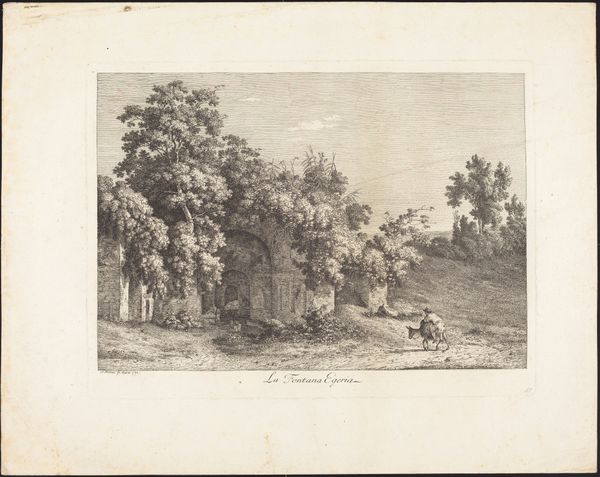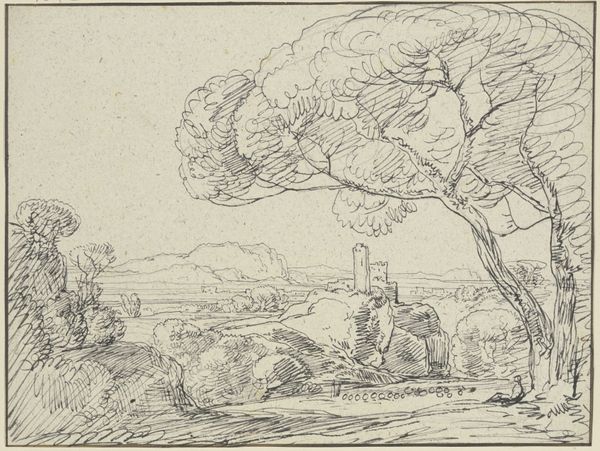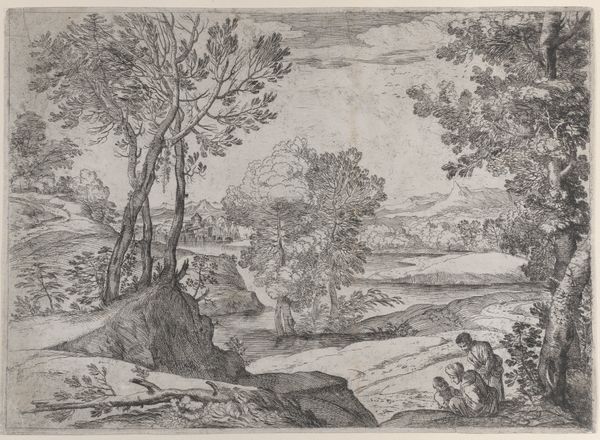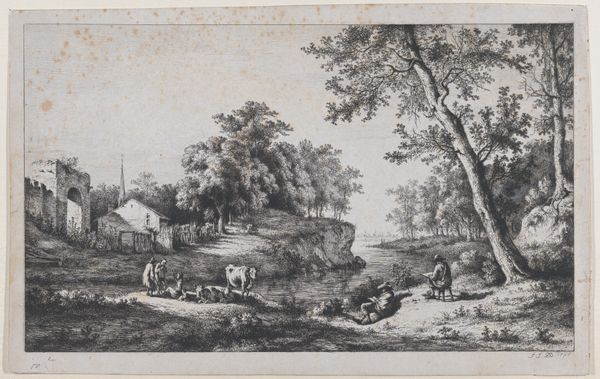
A peasant woman facing left in profile nurses a baby under a tree at right, a woman, seen from behind, walking next to a donkey in the middle ground, a church and bridge to left in background, from 'Various figures and lands' (Diverse figure e paesi) 1649
0:00
0:00
print, etching
#
baroque
# print
#
etching
#
landscape
#
figuration
#
genre-painting
Dimensions: Sheet: 3 11/16 x 6 1/8 in. (9.3 x 15.6 cm)
Copyright: Public Domain
Editor: So, here we have Stefano della Bella’s etching from 1649, titled 'A peasant woman facing left in profile nurses a baby under a tree at right, a woman, seen from behind, walking next to a donkey in the middle ground, a church and bridge to left in background, from 'Various figures and lands'. Phew, quite a title! The delicate line work creates such a peaceful, almost idyllic scene. What do you make of it? Curator: It’s interesting to see della Bella engage with the theme of rural life, especially given the turbulent social and political context of 17th century Europe. Beyond the seemingly idyllic scene, what can the imagery of peasantry reveal to us about power dynamics and societal values during this period? Editor: That's not something I considered at first. The peasant woman feels so serene and natural under the tree. Curator: Consider who these images were made for, though. Prints like these circulated widely among the upper classes. How might they have interpreted this scene of rural simplicity? Was it a genuine appreciation for peasant life, or did it perhaps serve to reinforce a sense of social hierarchy and control? Note that the church is off in the distance. Does that say something about social order, maybe? Editor: So, it's less about representing reality and more about reinforcing existing societal structures? A curated view of peasantry, almost? Curator: Precisely. And notice how the composition directs our gaze – the figures in the foreground are quite prominent, yet integrated within a much broader vista dominated by what seems to be in ruin. It invites the question of how this family fits into the landscape, and to what degree does landscape, and its history, shape their very lives? Editor: I see, the ruin in the distance contrasting with the active family and mother-child relationship in the foreground creates such a nuanced interplay! Thank you, that opens up a whole new way of thinking about it. Curator: Indeed! Considering the historical lens through which we view art helps us uncover the intricate layers of meaning embedded within seemingly simple depictions of everyday life.
Comments
No comments
Be the first to comment and join the conversation on the ultimate creative platform.
